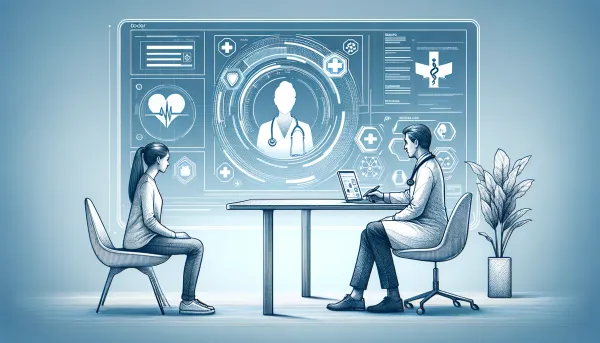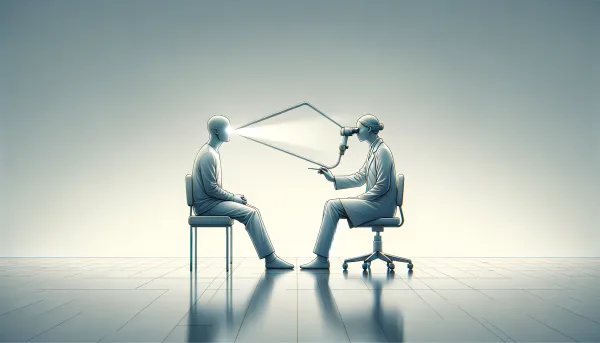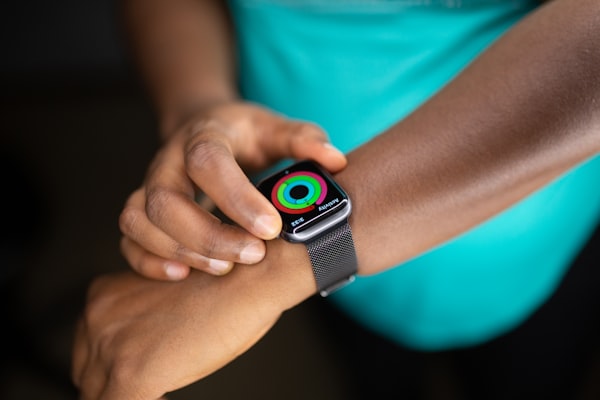Slack For Doctors
Communication in healthcare environments is very scattered. Some of it goes through emails and most through phone calls between doctors. Everything else is reserved for person-to-person communication.

Email is great. Everyone has an address and everyone knows how to use it. Heck, it’s not getting away anytime soon and it will outlive all social media. But the problem with it is that it usually clutters inboxes. Especially if you’re not rigorous about it. If you’re a doctor you may not even have a chance, since people are reaching out to you non-stop. Working through them seems like a whole another job. Healthcare is also dealing with highly sensitive information - sharing CT scans or patient reports via email is a no-go.
On the other side of the spectrum are phone calls. Doctors love them because they can say rather than write things, which makes communication much more efficient. That’s about it. You can’t send any data via phone calls. It follows that communication is dispersed.
In the corporate world, the solution is Slack. They brand themselves as the replacement to company emails - anyone can reach anyone and form groups with one another. Kind of like Facebook and WhatsApp. In my experience and belief, it’s much better than those two and used far too little in, for example, school environments (at least in Slovenia). It doesn’t quite solve the problem for healthcare. It’s more centred towards working and producing. Plus, it connects to any third-party service you can think of (Dropbox, Google, Outlook etc.), which also can’t happen in healthcare for privacy reasons.
Simultaneously we have a new and emerging breed of doctors that are reliant on messaging apps in their private lives. We practically live on Facebook, Instagram and the likes of it. This is the path to take in improving healthcare communication.
All of this crystallised when I heard about Siilo. A Dutch company that developed a messaging app for healthcare professionals and recently raised $10.5 million from a venture capital group from Germany.
Perhaps the most interesting feature is that it allows connecting professionals across the world. Not only can you coordinate patient care in your hospitals, but also discuss cases with other doctors from your speciality. This inevitably leads to a higher quality of care, faster diagnoses, and better outcomes for the patients. They call this “network medicine”.
In the last issue, I discussed privacy in med-tech startups and apps and how “free” apps can sometimes be a problem. Siilo is free, which made me question their privacy practices, but a more thorough look into their product gives a different look. Their product for most people is free, but they also offer a service to build custom chat environments for institutions (which is paid). So, they have a source of income and are trustworthy.
Another thing to keep in mind is the security of these messages, which they don’t lack. As mentioned before, sharing patient files via email is a no-go, so how could this be alright via a messenger app? Firstly, they validate everyone that joins Siilo. They cross-check the identity, so anyone can feel confident who they’re talking to. Secondly, messages are end-to-end encrypted, similar to what Apple does with their iMessages. The messages (and calls) exchanged between two Siilo users remain strictly between them, which allows for any kind of patient file to be shared. Additionally, any photos and videos are stored locally and not connected to any third-party apps such as Dropbox, etc. The security measures don’t even end there, so have a look and see for yourself.
My final consideration when thinking about Siilo’s application in healthcare is the use of smartphones in clinical settings. This didn’t seem like the best idea for a couple of reasons. Firstly, it presents a distraction for doctors and contributes to being disconnected from patients. And even if it’s for their benefit, smartphones are crowded with other distractions. Then again, having it all in one place might be better. In some ways, this makes communication more efficient, take less time and free more time to focus on the patients. Something to think about. Secondly, using the smartphone might not be the most practical. Typing is usually slower than on computers and workflows are slower. However, they solve this by also offering a desktop app. Especially popular right now is the spread of infections with smartphones. Smartphone screens are a “popular destination” for different pathogens.




